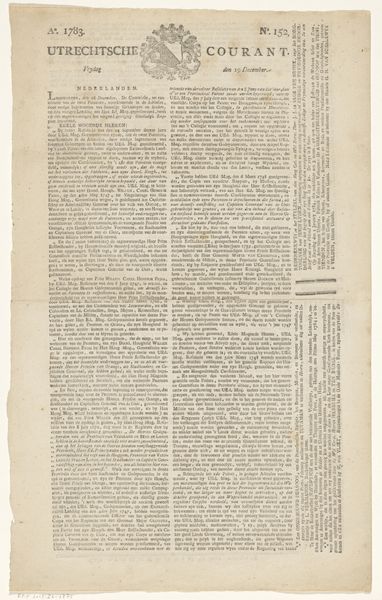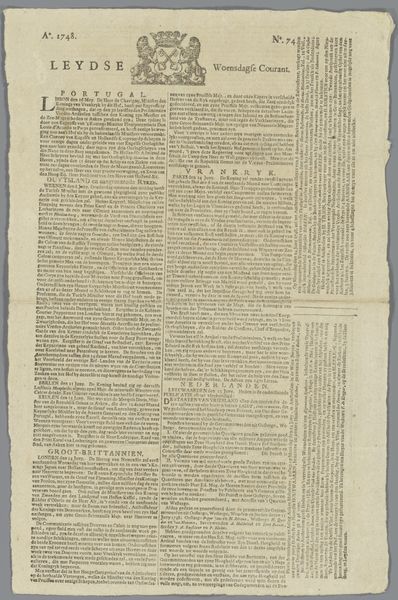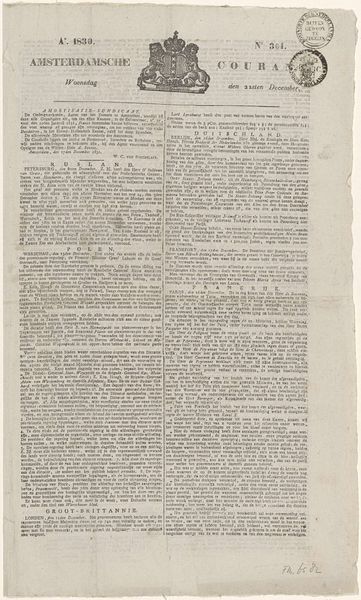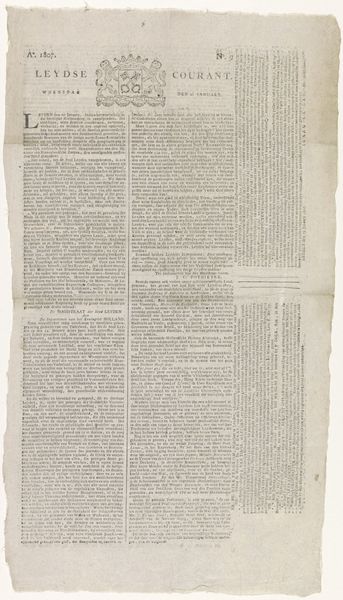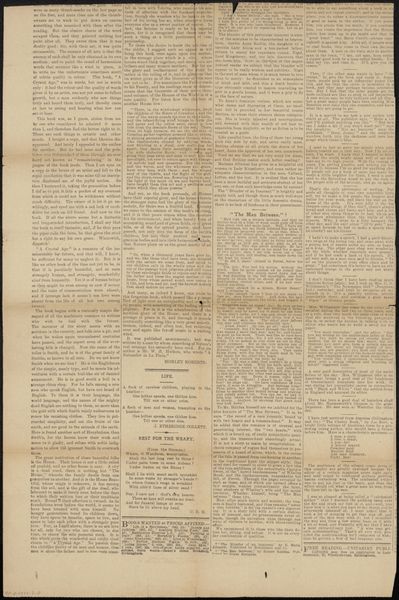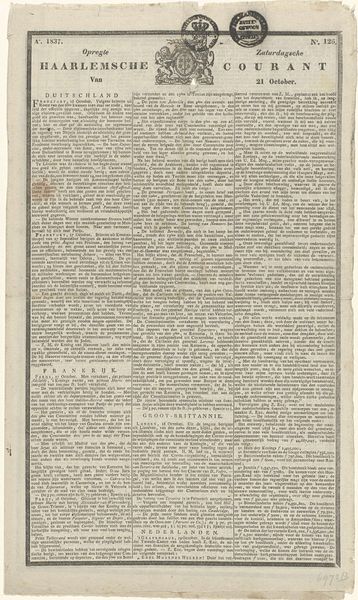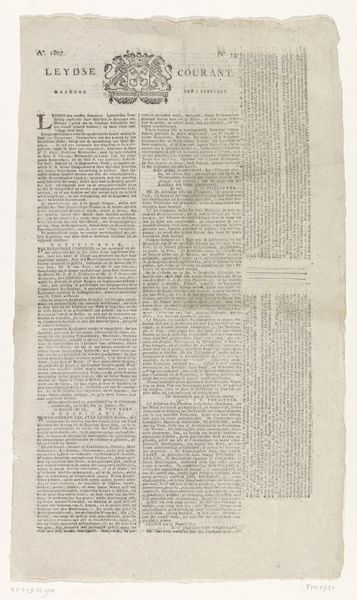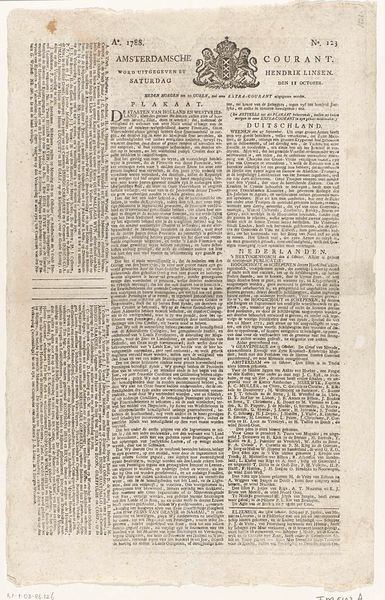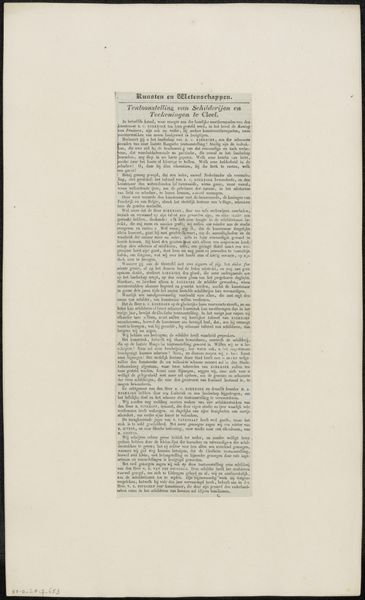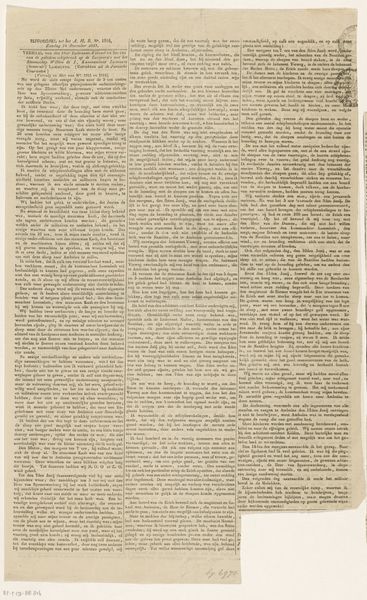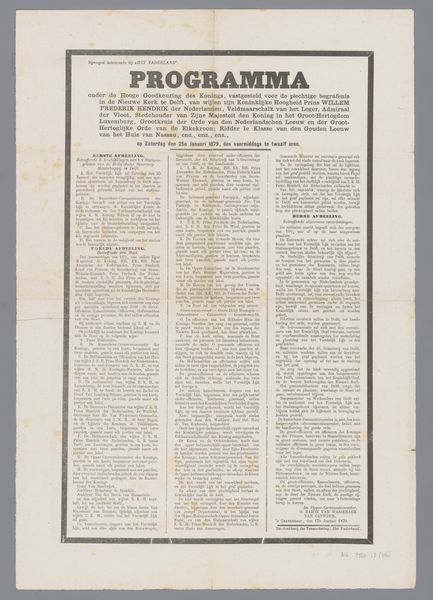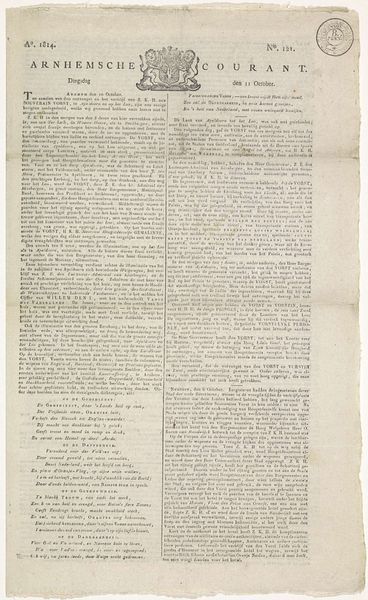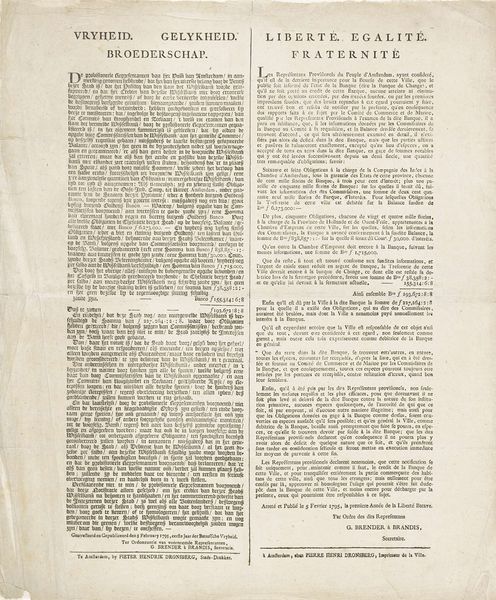
print, paper, typography, poster
# print
#
paper
#
typography
#
poster
#
realism
Dimensions: height 46.8 cm, width 28.5 cm
Copyright: Rijks Museum: Open Domain
Curator: This piece, likely from 1813, is titled "Utrechtse Krant," a newspaper crafted by De Leeuw en Comp. primarily using typography on paper. Its form is a simple poster or broadside, a fascinatingly direct medium for its time. Editor: Looking at this, I immediately feel the weight of history—that stark black ink on aged paper whispers stories of upheaval, resilience, and perhaps resistance. You know, it makes you want to learn about those folks! Curator: Indeed! Considering the period, the act of physically producing and disseminating such a document—the selection of typefaces, the printing process itself—represents a tangible form of communication tightly bound to the prevailing social structures and the technology of the time. Editor: Absolutely, the materiality of this print grounds the abstract concept of "news." Who was included? Who was not? What societal issues shaped the narrative? Were women and colonized people considered or represented within this document? Examining whose voices, labor and hands played a role brings another, critical view to light. Curator: And speaking of "hands", the manual labor, the compositor setting each piece of type, the press operator... These are integral to understanding the value and dissemination of information. Were there children working in the printer's shops at the time this was made? Who had access to literacy and therefore the ability to read this work of information? Editor: And furthermore, the 'Realism' tag in this era becomes very poignant. Was realism, in a way, an implicit form of political resistance through documentation, if indeed 'Utrechtse Krant' sought truthful reflections on those events? Also, I cannot overlook that any account from the colonizers is potentially untruthful if they do not mention the damages and horrors that were and are committed in their conquests. Curator: I see what you mean. This object really challenges us to consider layers of both production and consumption. Examining the distribution network -who bought and sold these papers, where it was consumed in taverns and public spaces by readers - could offer insight into community and information exchange. Editor: So true. For me, viewing the “Utrechtse Krant" means reflecting on the crucial role journalism has had on informing collective understanding while giving equal value and study to alternative stories and narratives for the pursuit of knowledge. Curator: It also urges one to appreciate the enduring strength found in the humble and material roots of the dissemination of facts and truth.
Comments
No comments
Be the first to comment and join the conversation on the ultimate creative platform.
